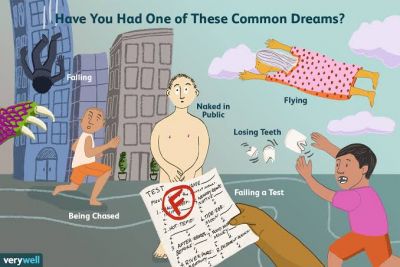That dreams contain hidden meanings is an old idea. The Biblical Book of Genesis, written down about 2,500 years ago, describes how Joseph, son of Jacob, interpreted the Egyptian pharaoh’s dreams of fat and thin cattle as predicting years first of plenty and then of famine. In China, meanwhile, the most popular work on dream interpretation has long been the “Zhougong Jie Meng”, a dictionary of explanations for weird and wonderful dreams written 500 years earlier still. It is, however, only since the publication of Sigmund Freud’s treatise “The Interpretation of Dreams”, in 1899, that dreams have become a subject of serious scientific scrutiny.
Things have moved on since Freud’s day. His emphasis on violent urges and sexual repression as the roots of dreaming now looks old-fashioned. Instead, the premise is that dreams reflect a dreamer’s quotidian experience—either because they are an epiphenomenon of the consolidation of memories or because they are a mental testing ground for ideas the dreamer may have to put into practice when awake. This resemblance between dreams and reality is dubbed the continuity hypothesis by psychologists. Data supporting it, however, are sparse. Such as exist come from clinical studies rather than examinations of people with healthy minds. And the numbers of participants involved tend to be small.
That is not true, though, of the latest investigation into the matter. As they describe in Royal Society Open Science, Alessandro Fogli of Roma Tre University, in Italy, and Luca Maria Aiello and Daniele Quercia of Nokia Bell Labs, in Cambridge, Britain, have analysed thousands of reports of dreams experienced by mentally healthy people. Using these, they have tested several predictions based on the continuity hypothesis and found support for all of them.
And not make dreams your master
The most common way of assessing dreams is the Hall and Van de Castle dream scale. This uses written reports of the characters appearing in a dream and of those characters’ social interactions, as well as the dream’s emotional content, to yield a set of scores that can be employed to create indices of things like the proportion of friendly, sexual and aggressive encounters in a dream.
Scoring dreams this way is, though, both time-consuming and subject to observer bias—meaning scores assigned by different people may not be properly comparable. The breakthrough made by Fogli, Aiello and Quercia was to automate things using a language-processing algorithm called a parsed tree. This deals with reports by the thousand, rather than the dozen, and does so consistently.
Their source of supply was the DreamBank, a repository of 24,035 reports of dreams that is maintained by the University of California, Santa Cruz. All the reports are in English. They span the period between 1910 and 2017. And most are from America. In addition to a dream’s contents, each report includes the age and sex of the dreamer and a brief biography. The predictions the three researchers looked at were that the sexes dream differently in pertinent ways; that people’s dreams change as they age; that life-altering personal experiences change patterns of dreaming; and that perceived levels of everyday aggression are reflected in dreams.
As to sex differences, men—the more violent sex in the waking world—also had (as predicted) more violent dreams than women did. On the question of ageing, Fogli, Aiello and Quercia were able to show that the dreams of individuals do indeed change as they move through adolescence and into young adulthood. In particular, they drew on 4,352 dreams recorded by “Izzy”, an anonymous woman who, between the ages of 12 and 25, systematically documented her dreams. Their algorithm showed that from 14 and 17 Izzy’s dreams usually involved negative social interactions and confrontation. From 18 to 25 those interactions became friendlier. Though it is dangerous to generalise from a single case, this pattern will no doubt be familiar to anyone who has watched a teenager grow up.
Waking experience, the algorithm showed, shapes dreams in other ways as well. A veteran of the Vietnam war, who had had intense exposure to violence during that conflict, dreamed more frequently of violence and aggression than did those with no military background. Conversely, the dreams of the blind, who often rely on the good offices of others to assist their everyday lives, were the friendliest and least violent of all.
Perhaps the most intriguing result came when the researchers let their algorithm loose on the broad sweep of history by dividing the DreamBank into decades. Lack of data meant they were able to do this meaningfully only from 1960 onwards. But when they did so they found that levels of violence and aggression in dreams were highest during the 1960s, and have subsequently declined in each decade since.
Why that should be is unclear, but they posit that, from an American viewpoint, the 1960s was a particularly violent decade, rife with political assassination, the threat of nuclear annihilation and the Vietnam war—a conflict fought with conscripts, and which therefore had especial resonance.
By these tests, then, the continuity hypothesis seems to pass muster. None of them, admittedly, seeks to answer the deeper question of what dreams are actually for. Whether a computational approach like this can investigate that matter as well remains to be seen. In the meantime, perhaps remember to stock up the larder if you dream of thin cattle. Just in case.
The Economist

